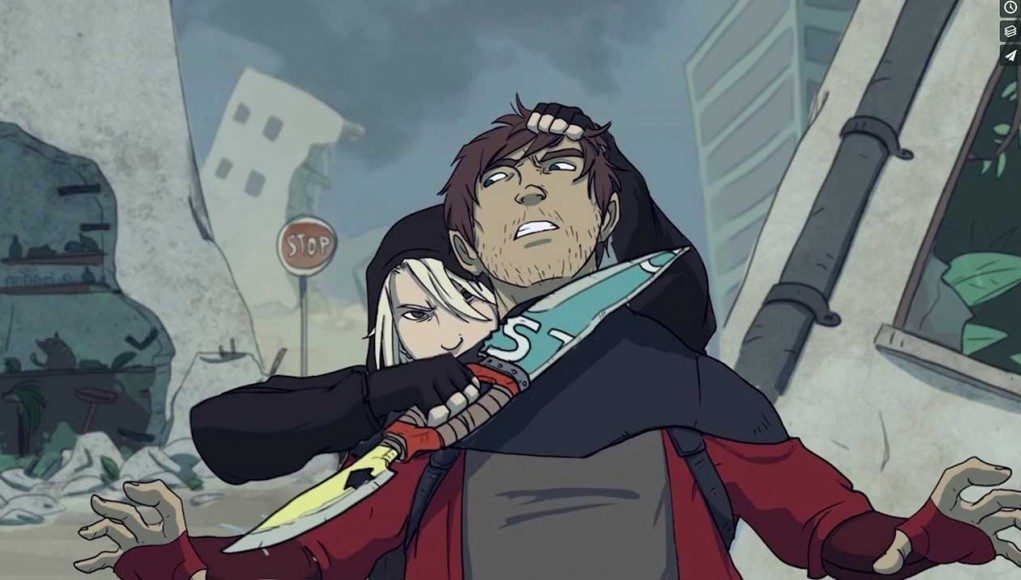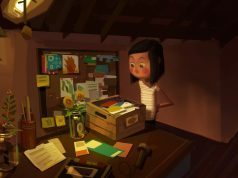 The first time that I experienced Sequenced, I had no idea that my gaze directions might have been triggering different branches or small events within the story. Experiencing an interactive drama, but not knowing it was one of the design challenges that Valve’s Chet Faliszek has previously described to me. But there are many other challenges with balancing interactivity and narrative that Apelab CEO & Sequenced producer Emilie Joly explained to me at the Silicon Valley Virtual Reality conference in April.
The first time that I experienced Sequenced, I had no idea that my gaze directions might have been triggering different branches or small events within the story. Experiencing an interactive drama, but not knowing it was one of the design challenges that Valve’s Chet Faliszek has previously described to me. But there are many other challenges with balancing interactivity and narrative that Apelab CEO & Sequenced producer Emilie Joly explained to me at the Silicon Valley Virtual Reality conference in April.
LISTEN TO THE VOICES OF VR PODCAST
Audio PlayerApelab has developed a series of a Spatial Story platform on top of Unity in order to handle this type of gaze-triggered, interactive narrative. Emilie says that in some Unity scenes that there are over 150 different triggers and both subtle local agency flavorings of control, but also decisions that send you off into different scenes.
Emilie’s goal was to create an experience that is highly replayable as measured by it being something that could be experienced again and again, but with different results. But if the player doesn’t know that they’re impacting the experience with their behavior, then how will they know that they should watch it again? That’s the crux of the design decisions that have to be made in order to let the viewer know that they can dynamically interact with the story through their gaze.
Emilie says that they experimented with making it more explicit, but found that it was a better experience to keep it somewhat hidden. And so she’s okay with people watching the experience without ever knowing the extent to how much their behavior’s impacted the version of the story that they experienced.
Another idea that has come up in previous interviews is that perhaps the audience is going to have to collectively learn the best way to watch different types of interactive narrative VR experiences. Sequenced is a good example of an experience that is pushing the boundaries of what’s possible with VR storytelling, and so there’s a good chance that it might be ahead of what the VR audience is ready for. Too much innovation in this space could lead to frustrating reactions of the audience not getting it. And it might be true that it’s only as audiences start to go through experiences like this that they’ll start to learn the best practices for how to watch it. So this can be a bit of a Catch-22 dilemma for cutting edge projects.
For story-based VR narratives, I’ve anecdotally noticed that non-gamers will tend to sit back, keep their head still, and not really interact with the VR scene. These are the type of first-time VR users where you have to coach them to look around. In order to watch a movie or TV show, we’ve trained our bodies to sit completely still and pay full attention to whatever is happening directly in front of us. VR can try to force us to break out of these patterns, but the audience is still learning the language of interaction that gamers have been cultivating for a long time.
I’ve found that gamers are much more likely to natively know how to explore and watch an interactive experience. They also tend to push the limits of the experience by exploring the bounds of interaction, which can also feel like they’re quality assurance testers trying to break the experience or find edge case bugs.
In hindsight, I think that I might’ve enjoyed and appreciated Sequenced more had I known that it had hidden gaze-based triggers. Road to VR’s Scott Hayden used the phrase “Reactive storytelling” is to describe these types of hidden triggers.
Perhaps it’s worth having a tutorial for people to show them the extent of how “reactive” of a VR experience it is going to be. Or perhaps just knowing that an experience will be responsive to your behaviors and passive gaze interactions will be enough information for some people. Or perhaps some people will prefer not to know anything about the level of engagement available, and let good design of the experience make that explicitly clear. In the end, I hope we can just rely upon good VR design, but we’re in this awkward transitional period where the audience is still learning how to engage with immersive media while the boundaries of the VR medium are being pushed by companies like Apelab.
Another takeaway is that it sounds like the game engines like Unity and Unreal Engine that are used for creating these types of interactive narratives still have a lot of work yet to be done before everyone will be able to easily create their own type of experience that mimics Sequenced’s sophisticated triggering system.
I expect that eventually a lot of these branching story triggers will not have to be so hard coded, but that artificial intelligence agents will be able to be more reactive within certain bounds. Mark Riedl and Vadim Bulitko wrote up a really great paper titled “Interactive Narrative: An Intelligent Systems Approach” that summarizes over 20 years of research into interactive fiction. And for more information on interactive narrative and AI, then also be sure to check out my interview about Playabl.AI with Façade’s Andrew Stern.
Sequenced is an ambitious effort, and doing some important work in pushing the boundaries of interactive narrative. Road to VR previously reported that their 10-episode season is due to “arrive on HTC Vive, Oculus Rift, Samsung Gear VR and Google Cardboard starting in early Q4 2016.”
Here’s a trailer for Sequenced
Support Voices of VR
- Subscribe on iTunes
- Donate to the Voices of VR Podcast Patreon
Music: Fatality & Summer Trip










